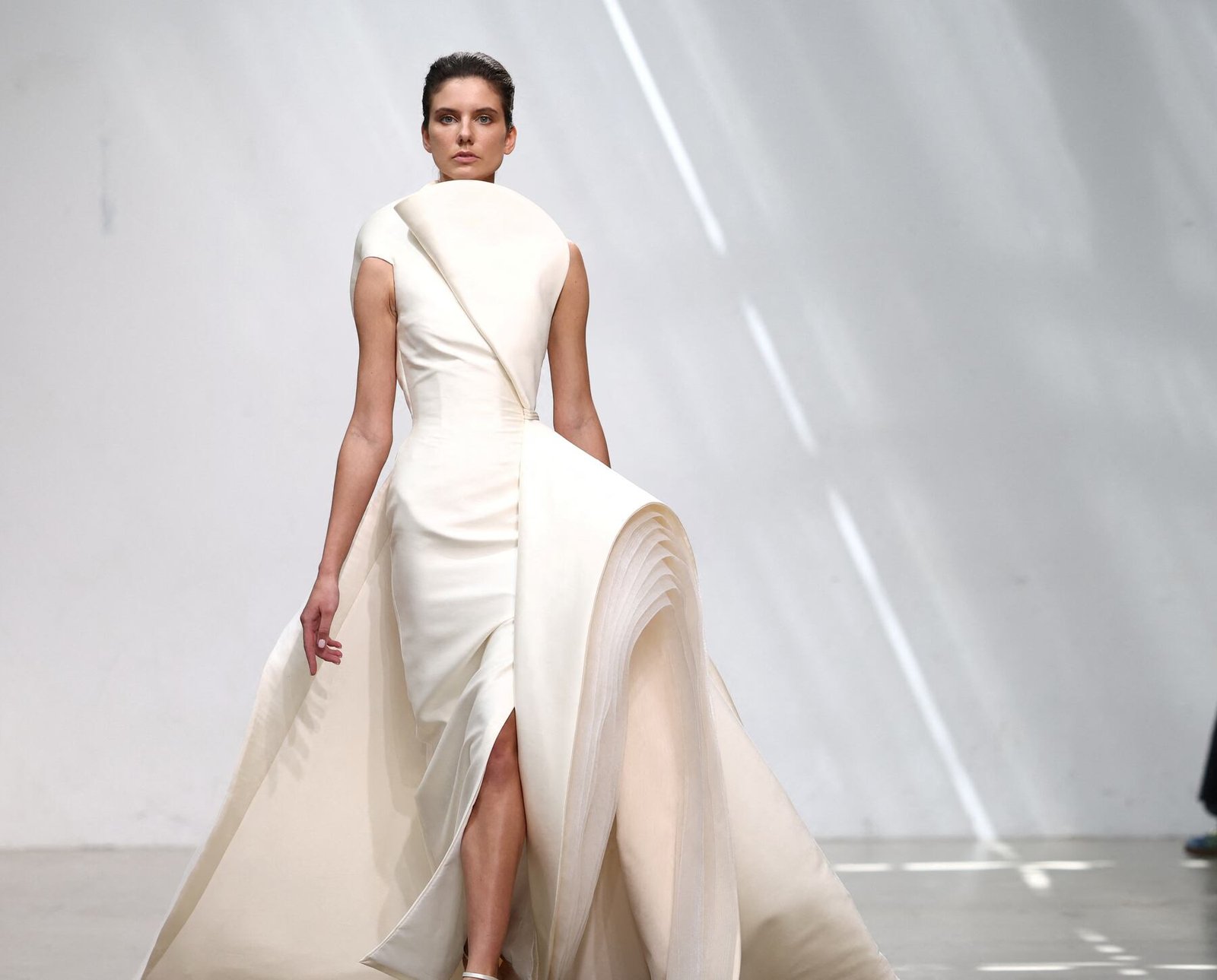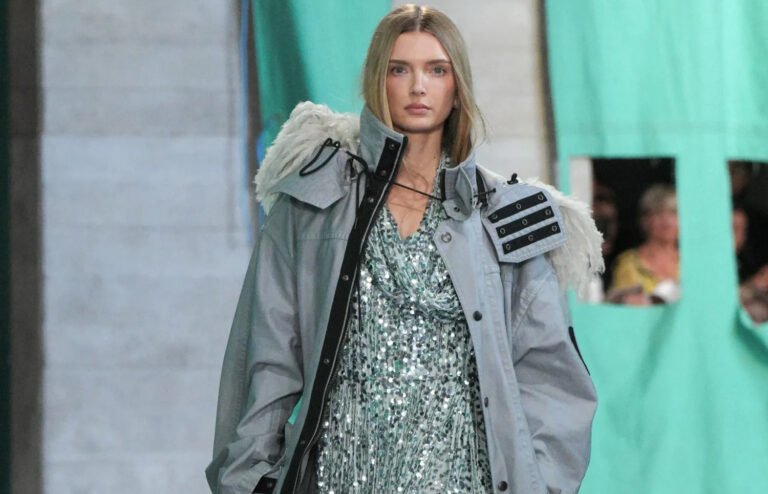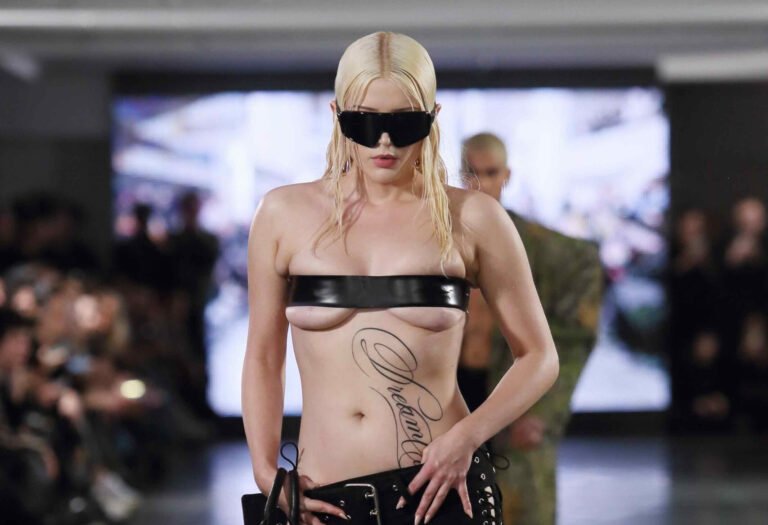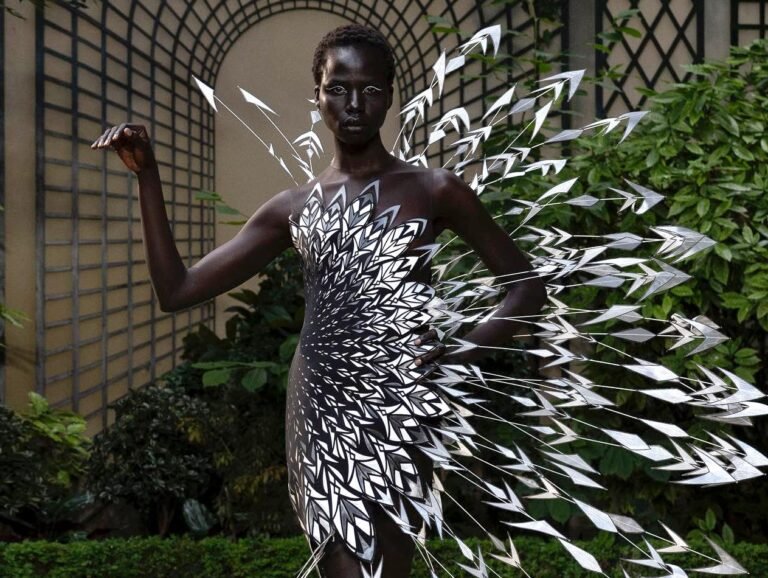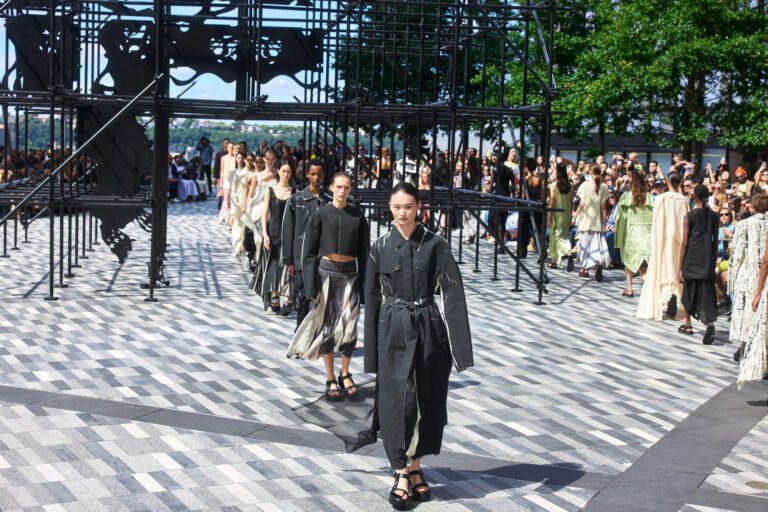Rami Al Ali’s Paris Couture Fashion Week debut illuminates Syrian heritage; collection review
Rami Al Ali made history as the first Syrian designer to join the official Paris Haute Couture Week calendar, presenting his fall 2025 collection, “Guardian of Light,” as an official guest of Paris Fashion Week.
The Dubai-based designer, whose atelier has quietly built a global reputation over two decades, delivered a show that placed Syrian heritage at the forefront of haute couture. With a client list boasting names like Beyoncé, Helen Mirren, and Priyanka Chopra, Al Ali’s debut was a landmark moment, not just for his brand but for Arab representation in an industry often dominated by Western houses.
The collection, rooted in Syria’s cultural legacy, offered a narrative of hope and resilience, reflecting the designer’s vision for a brighter future for his homeland.
Rami Al Ali’s journey to Paris began in Deir ez-Zor, Syria, where he was born in 1971. Raised in a country rich with architectural and artistic traditions, he developed an early appreciation for the intricate mosaics of Damascene courtyards, the vibrant textiles of Aleppo’s souks, and the delicate rose motifs that symbolize Syrian culture.
After moving to Dubai in the late 1990s, Al Ali founded his eponymous label in 2001, focusing on couture and ready-to-wear that merged Middle Eastern aesthetics with global appeal. His designs quickly caught the eye of international celebrities and royalty, earning him a reputation for precision and elegance.
By 2012, he was showing collections in Paris, but his 2025 inclusion in the official Fédération de la Haute Couture et de la Mode calendar marked a new pinnacle, affirming his status among couture’s elite.
Al Ali’s atelier in Dubai operates with a dedicated team, emphasizing handcrafted techniques that echo Syria’s artisanal past. His work often incorporates silk, tulle, and intricate beadwork, reflecting the labor-intensive embroidery traditions of Aleppo, where weavers once produced brocades for Ottoman courts.
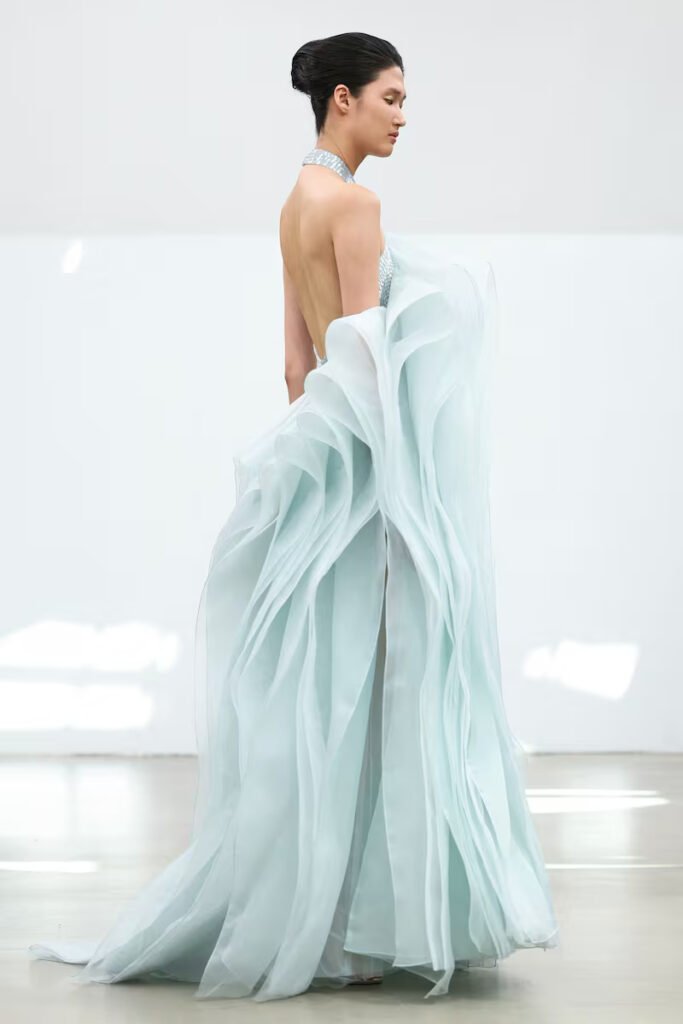
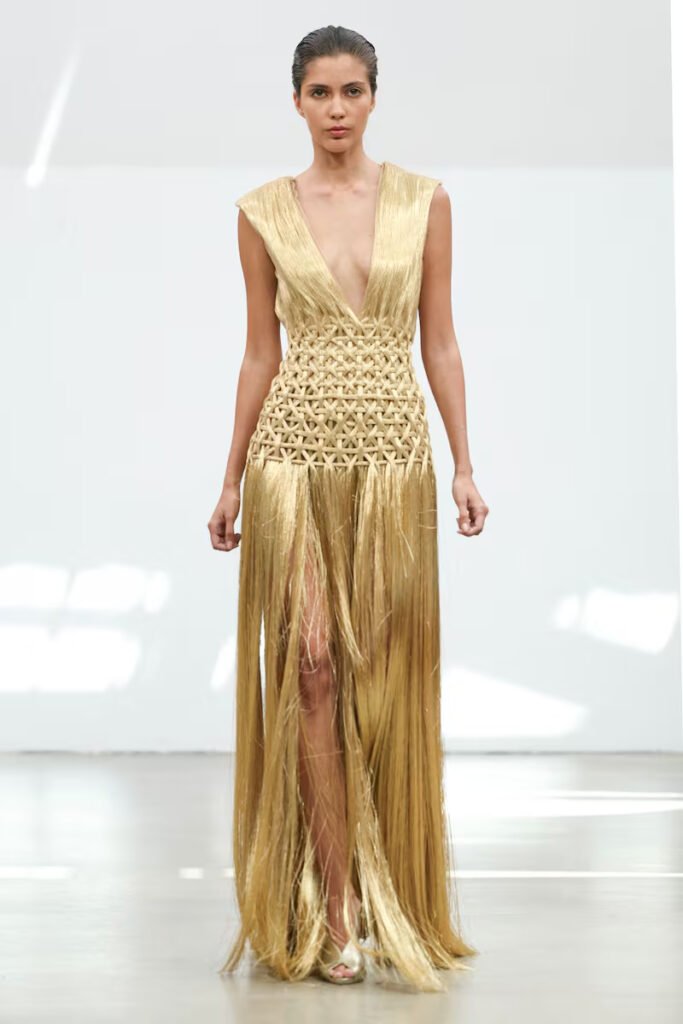
For “Guardian of Light,” Al Ali drew inspiration from Syria’s recent political shifts, particularly the hope for renewal following years of conflict. The collection’s title, evoking light as a symbol of optimism, was a nod to the resilience of Syrian people and their cultural heritage, which Al Ali has long championed through his designs.
The runway at Paris’s Palais de Tokyo was a showcase of Al Ali’s ability to translate Syrian heritage into modern couture. The collection featured 40 looks, each a study in balance between structure and fluidity. Soft pastels—blush pinks, ivories, light blues, and muted golds—dominated the palette, a departure from the bolder hues often seen in Middle Eastern design, signaling a universal appeal.
Gowns flowed with pleated silk and rolled crepe, their surfaces adorned with hand-stitched embroidery and beadwork that caught the light like Damascus’s Barada River at dusk. Structured pieces, including tailored jackets and corset-inspired bodices, echoed the geometric precision of Syrian mosque tiles, while softer silhouettes recalled the organic curves of rose petals, a recurring motif in Al Ali’s work.
Read also…
Standout looks included a blush pink gown with a cascading train, its beadwork mimicking the intricate patterns of Damascene woodwork, and a sculptural ivory dress with angular shoulders that nodded to Aleppo’s architectural heritage. Accessories were minimal but deliberate—delicate headpieces and metallic cuffs inspired by traditional Syrian jewelry.
The collection’s emotional weight came from its storytelling: each piece felt like a chapter in Syria’s history, from its ancient trade routes to its modern struggles. Fashion critics noted the technical mastery, with Women’s Wear Daily praising Al Ali’s “ability to weave cultural narratives into wearable art without sacrificing sophistication.”
The show’s setting amplified its impact. The Palais de Tokyo, with its stark, modern interior, provided a neutral backdrop that let the collection’s textures and colors shine. Models moved with a deliberate grace, their pacing allowing guests to absorb the craftsmanship. The finale, a parade of luminous gowns with feather-light trains, drew gasps from the audience, a testament to Al Ali’s ability to balance grandeur with intimacy. Unlike many couture shows that lean on spectacle, “Guardian of Light” felt personal, a reflection of the designer’s deep connection to his roots.
A milestone for Syrian representation
Al Ali’s debut was also a very meaningful cultural milestone. Syria, often associated with conflict in recent years, has a rich history as a cradle of civilization, home to ancient cities like Palmyra and artisanal traditions that predate modern borders. Al Ali’s collection brought this legacy to the forefront, challenging stereotypes and showcasing the sophistication of Syrian design.
His use of rose motifs, for instance, referenced the Damascene rose, a symbol of beauty and resilience cultivated in Syria for centuries. By integrating these elements into haute couture, Al Ali positioned Syrian culture as a source of inspiration for a global audience.
The timing of the show added to its significance. Syria’s recent political changes, including shifts toward stability, informed Al Ali’s optimistic narrative. In interviews, he has spoken of his desire to honor his homeland’s potential for renewal, a theme that resonated with attendees, including Middle Eastern dignitaries and international editors.
The collection’s universal appeal—its soft palette and timeless silhouettes—ensured it spoke to a wide audience, while its cultural specificity gave it depth. Vogue Arabia called it “a love letter to Syria that transcends borders,” a sentiment echoed by attendees who saw Al Ali’s work as a bridge between East and West.
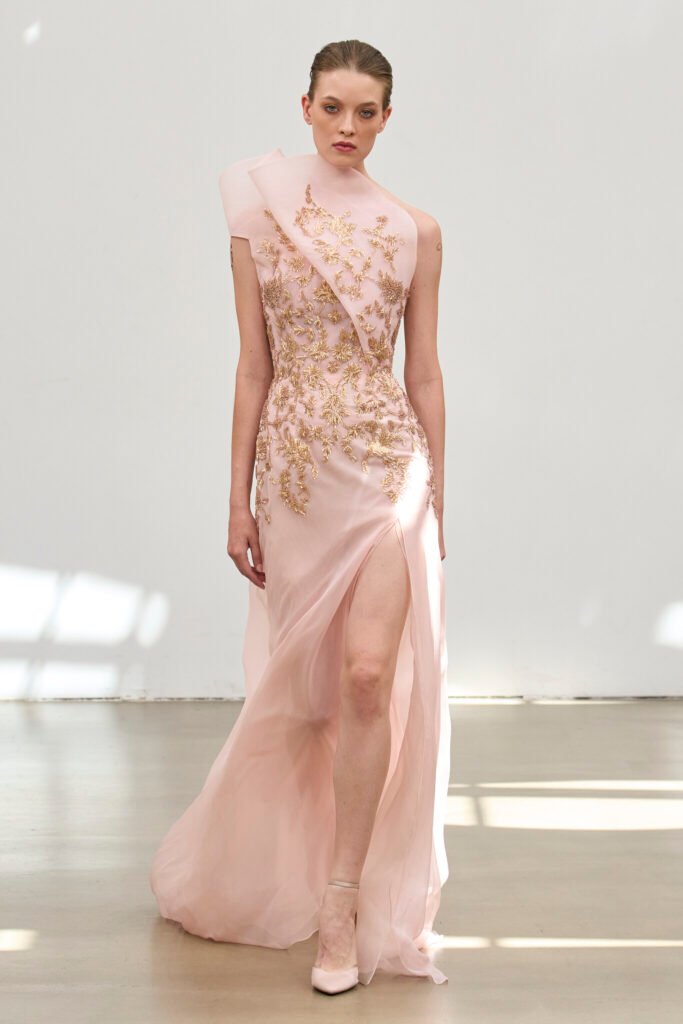
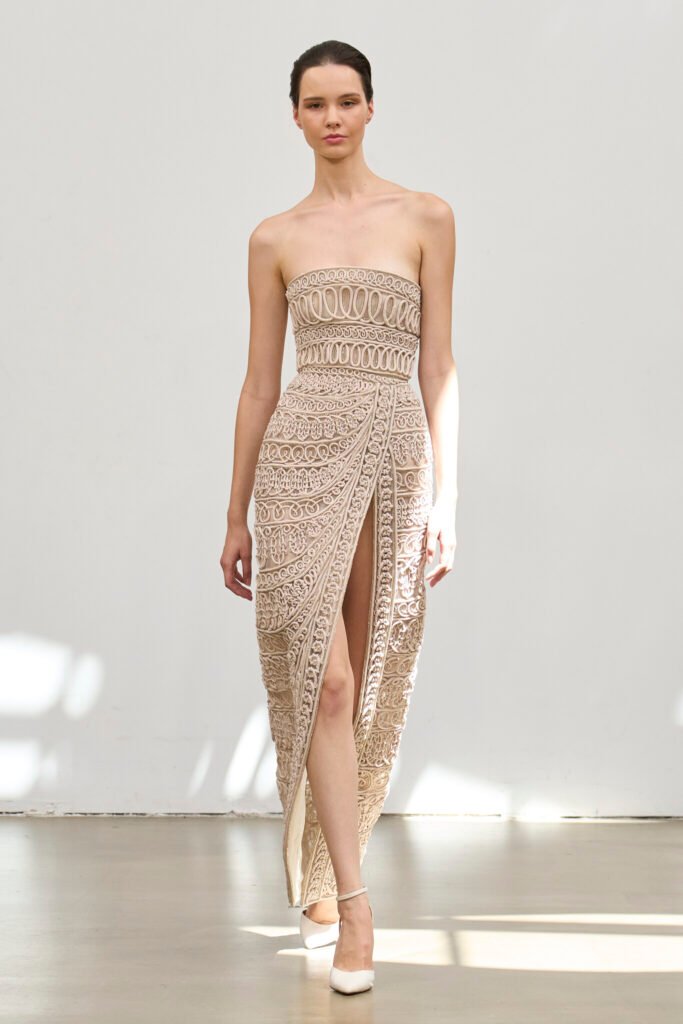
For those unfamiliar with haute couture, Al Ali’s work is an accessible entry point. His designs, while luxurious, prioritize storytelling over ostentation, making them relatable to anyone who values culture and creativity. The “Guardian of Light” collection is a testament to the power of fashion to preserve heritage while pushing boundaries.
Al Ali’s historic debut not only elevates Syrian design but also challenges the industry to embrace voices from underrepresented regions. As Paris Haute Couture Week closed, his show lingered as a highlight, proving that fashion can be a canvas for hope, history, and humanity.

